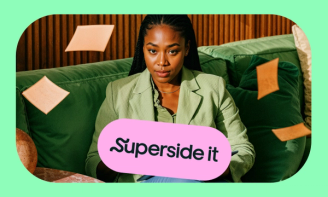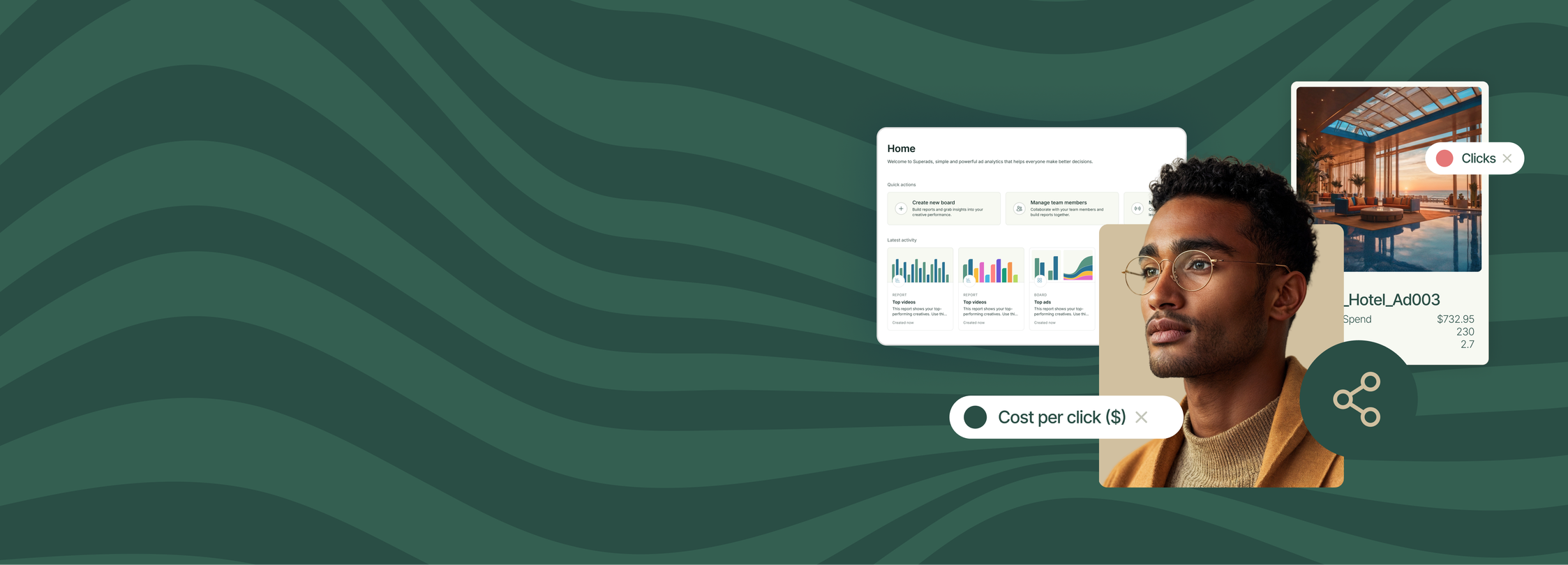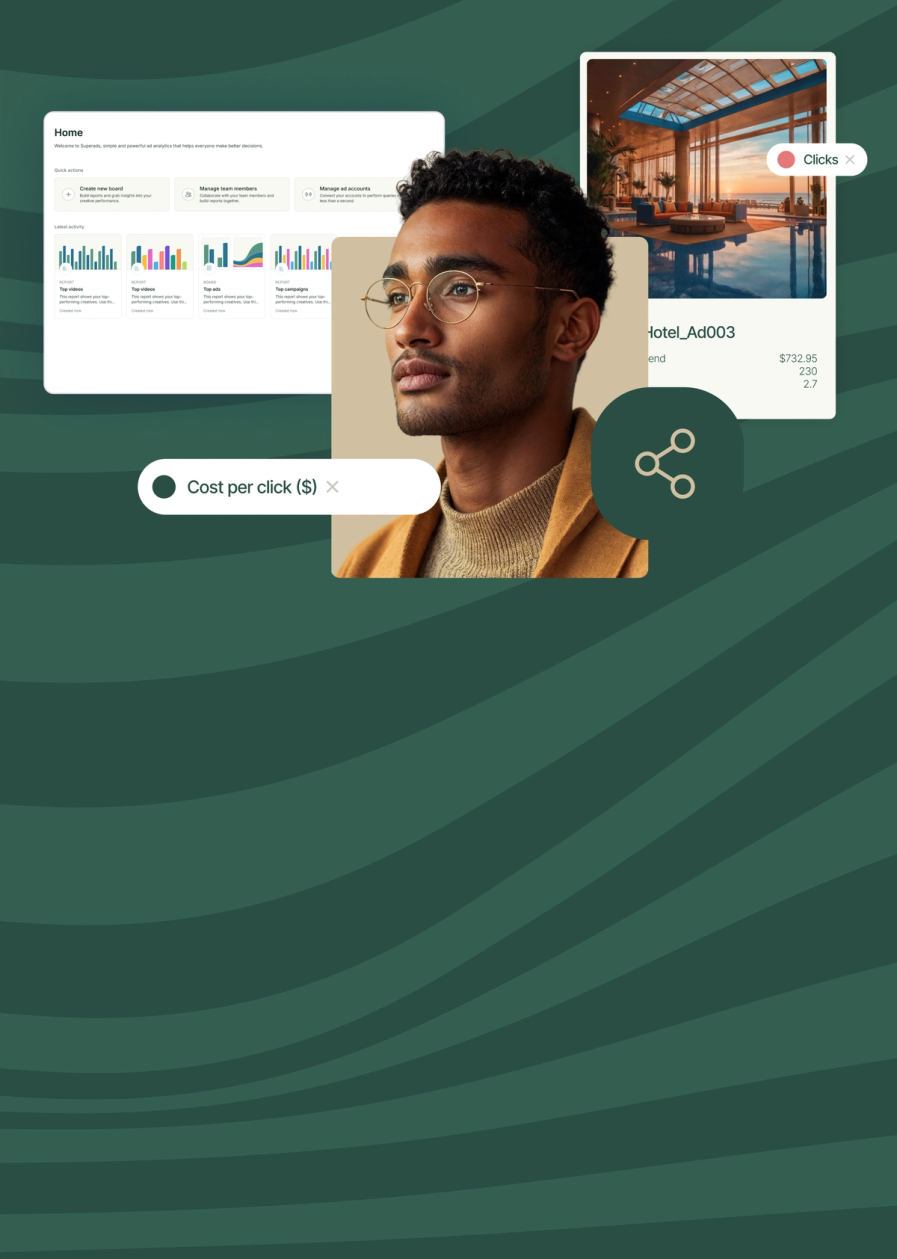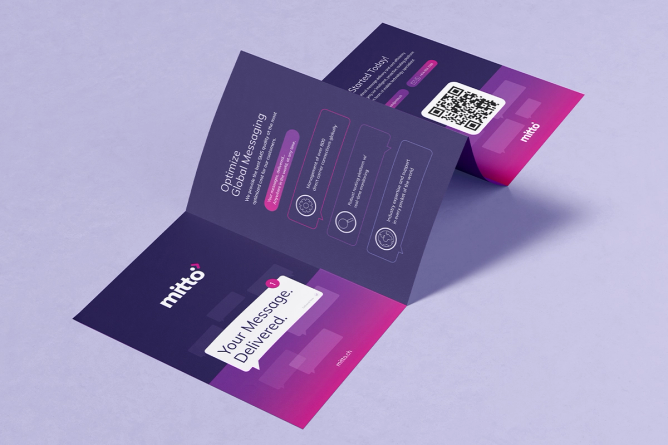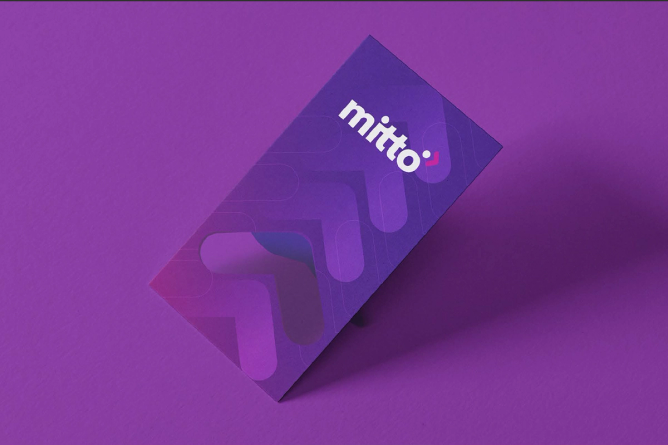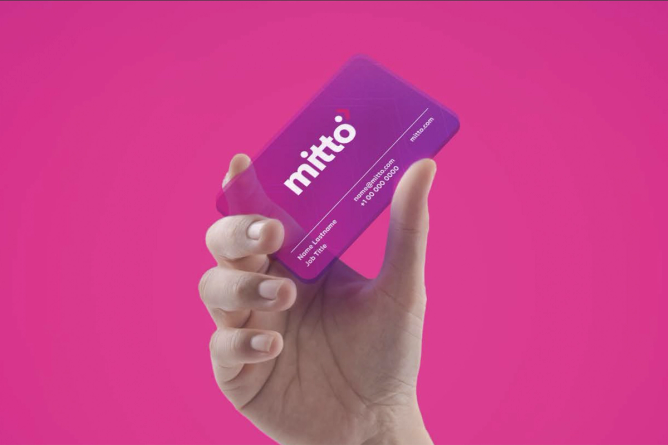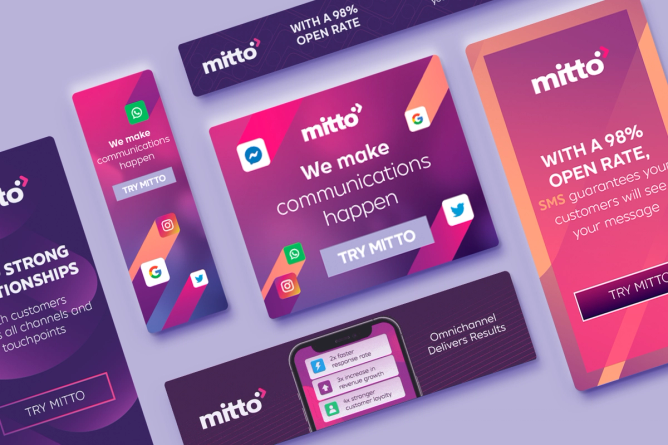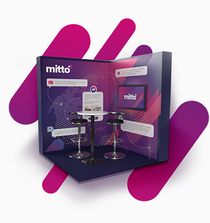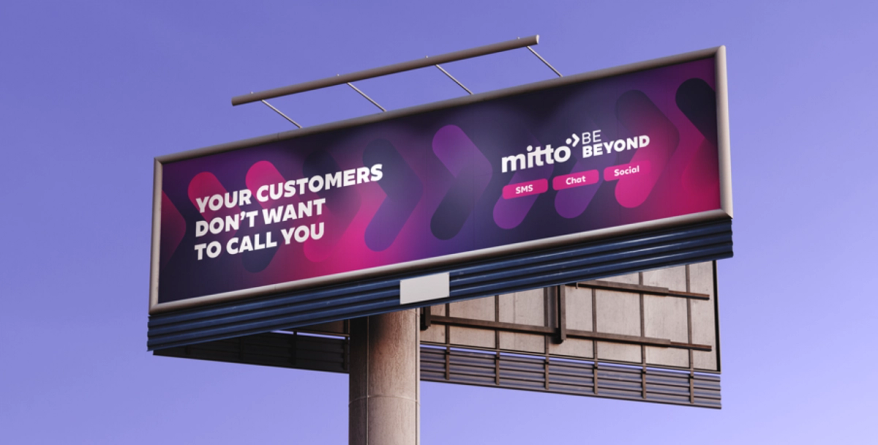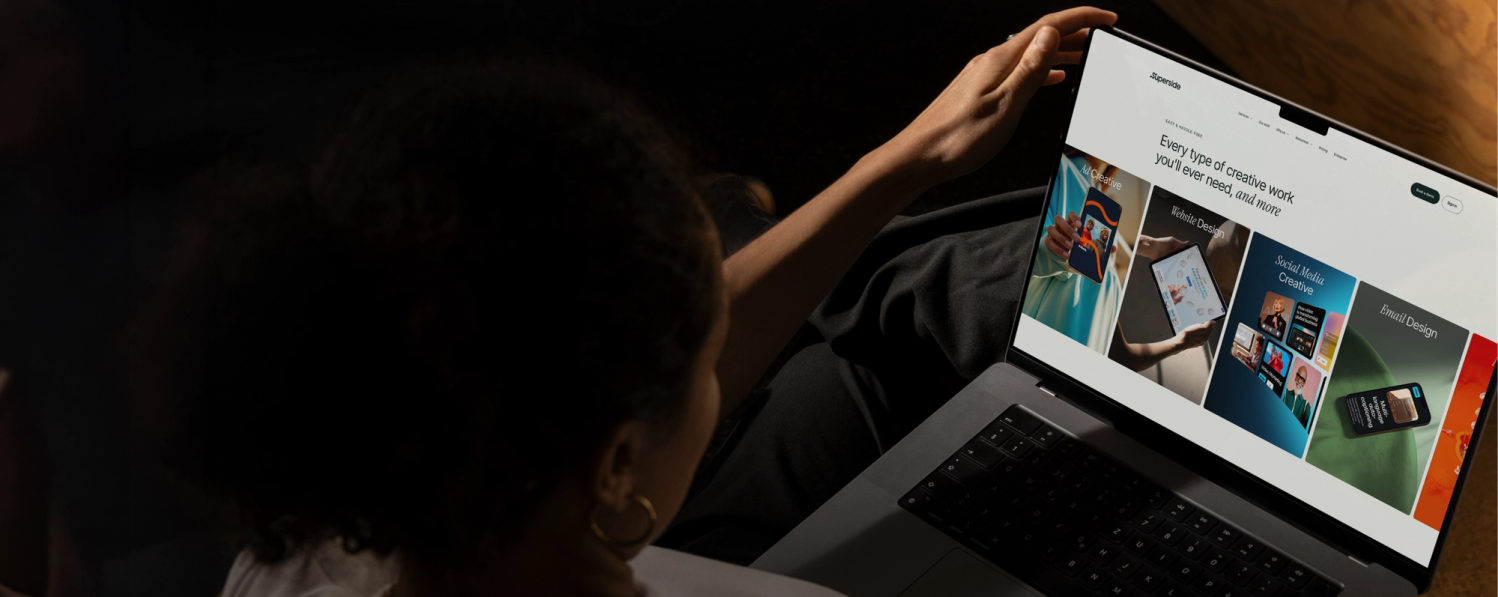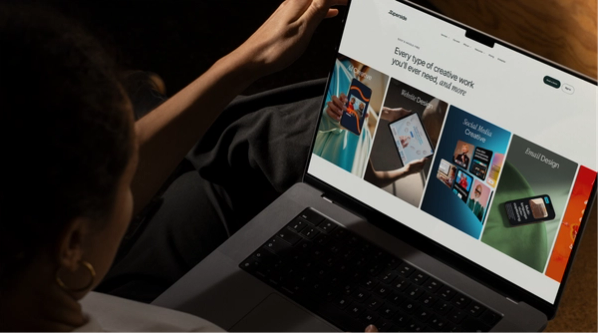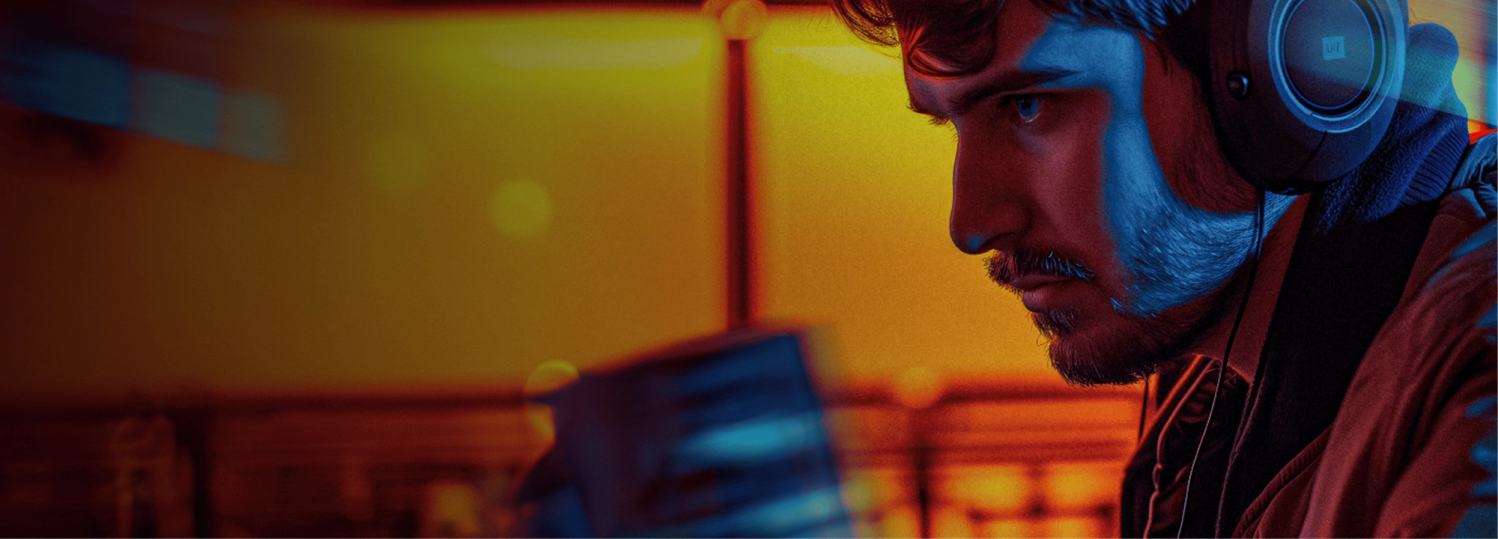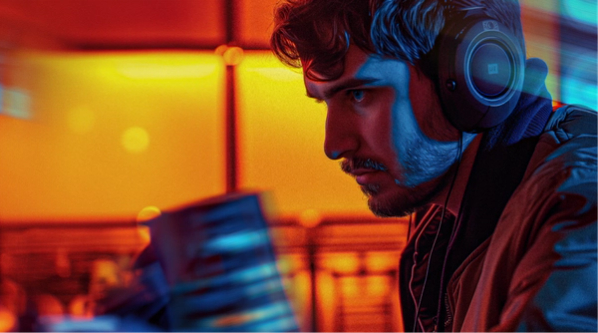12 omnichannel marketing campaign examples in 2025
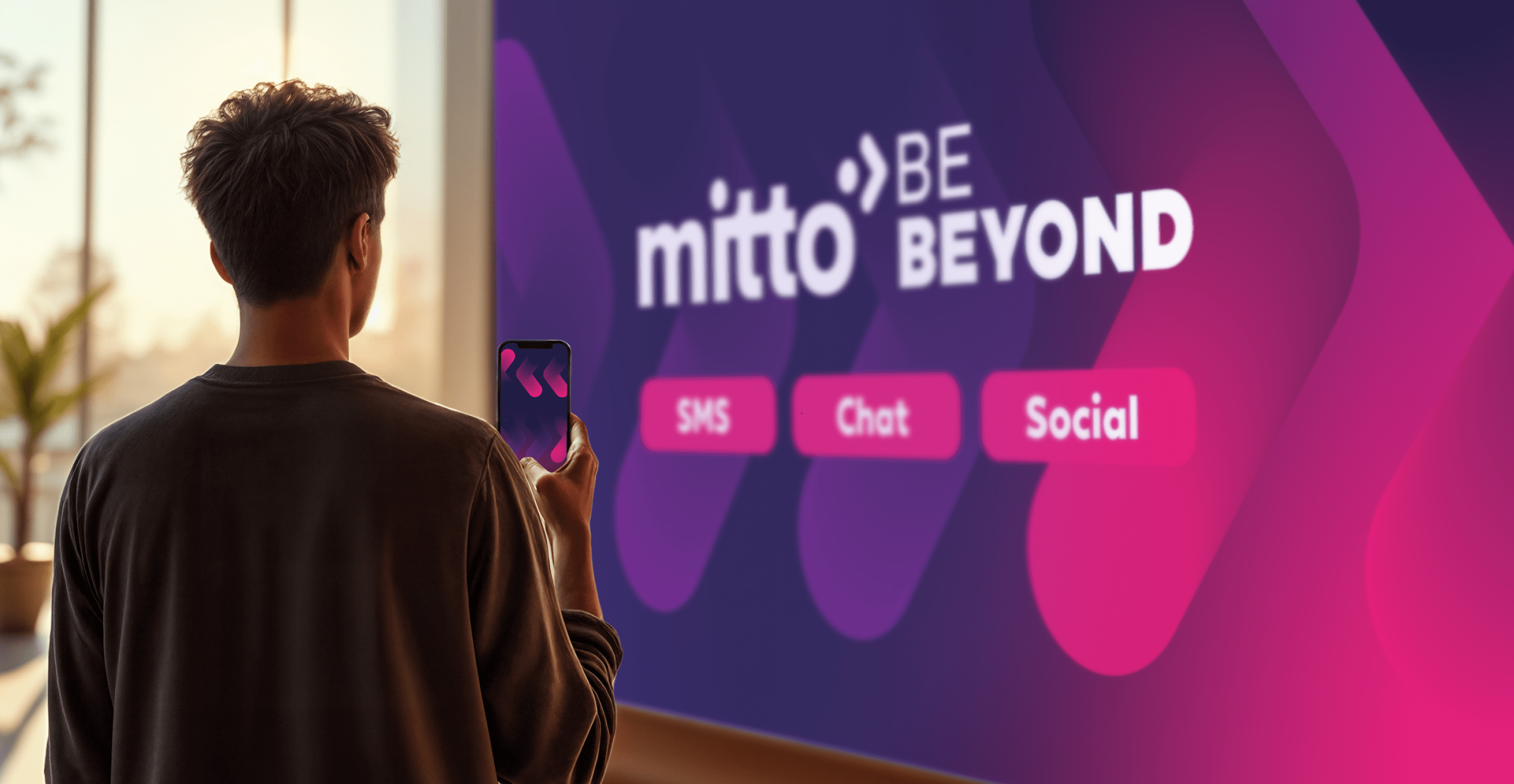
Omnichannel marketing isn’t just about being everywhere. It’s about showing up with purpose and personality. Take your cue from some of the world’s best omnichannel marketing examples and discover how to paint a memorable brand picture across every customer touchpoint.
Modern customers move across various channels and rarely stick to just one brand touchpoint. In fact, seven out of ten retail shoppers engage with brands across multiple channels before they make a purchase.
Brands that embrace this reality with strong, coherent omnichannel strategies see the payoff: They retain at least 89% of their customers, compared to just 33% for those with weaker approaches. Even more striking, omnichannel marketing can drive sales increases of up to 287%.
Omnichannel means consistency, uniformity and integration between creative, marketing and data teams aren’t just best practices. They’re powerful elements for a marketing campaign's success and sustainable growth.
In this article, we highlight the best omnichannel marketing examples of 2025 and examine how top brands craft exceptional, cross-platform experiences that foster customer loyalty and drive business results.
What is omnichannel marketing?
Omnichannel marketing is a strategic approach that delivers a seamless, uniform customer experience across all media channels and brand touchpoints, both online and offline (e.g., your website, social channels, TV ads, online shop and billboards).
This type of marketing integrates creative execution and customer data to ensure all interactions feel unified, regardless of where or how a customer engages with the brand.
Omnichannel vs multichannel marketing: What’s the difference?
While both approaches involve multiple channels, multichannel marketing can use each channel independently, often with separate strategies and goals. This can lead to inconsistencies and fragmented customer experiences, as each channel operates in isolation rather than as part of a cohesive journey.
In contrast, omnichannel marketing integrates all marketing channels to deliver a seamless and unified customer journey.
How to develop an omnichannel marketing strategy that delivers
If you’re ready to build an omnichannel marketing strategy that works, these steps will get you closer to your goal:
1. Understand your customer journey across platforms
Your first step is to map out and understand how your customers interact with your brand across different platforms and touchpoints.
Consider the full journey your customer takes as they move between, for instance, social media platforms, email, your website, mobile apps and even in-store or phone interactions.
A thorough analysis of the customer journey helps you identify key moments of engagement, points of friction and opportunities for personalization.
Tools like customer journey maps, customer service feedback loops and behavioral analytics can also help you understand where your audience is and what they need and experience at each stage.
2. Align messages and creative assets with each funnel stage
Your omnichannel marketing campaign must deliver the right message, in the right format, at the right time. This means you need to align your creative with each stage of the funnel. The top, middle and bottom of the funnel (TOFU, MOFU and BOFU) all require different messages and assets.
At the top, for example, your goal is to build awareness and spark curiosity about your brand, like we did above (😉). In the middle, your creative and messages should be more direct and action-oriented. At the bottom, you can pull several triggers to encourage customers to cross the purchase line (e.g., use highly personalized messages and discount codes).
Every interaction should seamlessly fit into your brand narrative, with visuals, messages and tone consistently tailored to both the channel and the customer’s stage in their journey.
3. Develop channel-specific strategies that ladder up to a unified campaign narrative
Omnichannel marketing focuses on consistency, yes. But this doesn’t mean every creative asset on every channel should be exactly the same.
Instead, each channel should have its own tailored strategy, optimized for how users interact with it. What works on one platform doesn’t necessarily work on the other.
Get the same messages represented across all channels, from the website and LinkedIn page profile to Meta accounts and more, according to their audience's needs, just like this:
At Superside, for example, we talk with our audiences through a single, cohesive omnichannel experience through videos, newsletters, live summits, social media and more.
Each channel strategy uses the strengths of the individual platform, yet all the creative contribute to the same overarching, on-brand campaign narrative.
4. Aim for bang-on brand consistency across all touchpoints
No matter where your audience interacts with your brand, they should instantly recognize it’s you. This brand consistency builds trust, improves brand recall and reinforces your positioning in customers’ minds.
To get this right, it’s critical to focus on visual consistency and message alignment.
5. Create a detailed production calendar and distribution map
A solid omnichannel marketing campaign involves a complex, interconnected set of activities that go far beyond just content creation and launch.
The best way to keep all your ducks in a row is to use a centralized production calendar and content distribution map. These two tools work as the campaign’s operational backbone.
A production calendar outlines all key deliverables like videos, graphics, copy, emails, landing pages and digital ads. It also includes deadlines, owners and status updates. The calendar helps your marketing team to stay on track, prioritize resources and avoid last-minute scrambling to meet deadlines.
On the other hand, a distribution map lays out where and when each asset will be published or deployed. This map ensures that campaign messages flow in a coordinated sequence across platforms and audience segments.
6. Use performance data to refine asset delivery and iterate in real-time
Once a campaign goes live, the work is far from over. It’s essential to continuously track performance metrics like click-through rates, engagement and conversions to gauge effectiveness and spot trends.
Creative analytics will help you to quickly identify which elements resonate with your audience and where drop-offs occur.
These insights can help you refine your creative assets and delivery strategy. You may, for example, have to adjust your ad creative, reallocate your budget or align your messages more closely to each stage of the funnel.
Real-time iteration enables you to work quickly, stay relevant and maximize your return on investment. Superads, our free AI-powered analytics tool, makes this process effortless.
7. Partner with a creative team that can scale across every medium and market
A solid omnichannel campaign strategy will only get you so far. You also need a coordinated team that can deliver a mountain of assets quickly and cohesively.
Unfortunately, few in-house enterprise teams are equipped to deliver at the scale required. In fact, 76% of creative leaders and team members experience burnout due to their workload.
Does your team have the capacity to execute?
Discover how we Supersided other enterprise brands’ creative hurdles into omnichannel success stories.
Top 12 omnichannel marketing examples from B2Bs vs. B2Cs in 2025
Get fresh ideas straight from the brands that lead the way with this updated roundup of the best omnichannel marketing examples.
B2B omnichannel examples
1. Superside x Palo Alto Networks
Palo Alto Networks, a global cybersecurity leader, needed a steady stream of high-quality creative for their many social channels but struggled to keep up with demand and maintain brand consistency. Superside stepped in to expand their creative ecosystem.
First, we supported their evergreen social media content strategy, expanding our support to thought leadership campaigns, product marketing and more. We also delivered fun, fast-paced videos for the brand’s Precision AI launch.
The result: More efficient creative workflows and on-brand creative that drove greater brand awareness and customer engagement.
- Integrated channels: Video, social media, blog posts, press releases.
- Superside services used: Digital ad creative, social media design, motion design.
- What we like: Superside and Palo Alto’s ability to translate complex cybersecurity and AI concepts into strong visual narratives across channels.
- Best for: B2B tech brands that want to simplify complex innovations in a unified way across all customer touchpoints.
2. Superside x Mitto
When Mitto wanted to build a scalable omnichannel marketing strategy, the communications solutions provider found the ideal partner in Superside.
Our team helped them quickly build a cohesive suite of creative assets, including digital ads, event merchandise, trade show materials and internal presentations, that told a confident, unified story of reliable customer communication and innovation.
With the ability to scale assets across regions and languages, Mitto could maintain brand consistency and better support its sales and product teams.
- Integrated channels: Digital ads, web content, animations, merchandise, out-of-home (OOH) ads, stands, push notifications, social media.
- Superside services used: Print design, social media design, digital ad creative, OOH design, merchandise design.
- What we liked: Mitto successfully bridged the divide between OOH and digital ads, launched unified initiatives with speed and geographic reach, and maintained a singular brand voice and aesthetic.
- Best for: Brands that aim to establish both a robust physical marketing presence and digital marketing footprint.
If you tap into Superside’s suite of design services, there’s no reason why your next campaign can’t be among the world’s top omnichannel marketing examples. Explore our work to see how we help top brands launch standout ads and campaigns at scale and speed.
B2C omnichannel examples
3. Starbucks
(Source: Starbucks)
Starbucks is recognized as an omnichannel marketing leader that seamlessly connects digital and physical experiences through its mobile app and Mobile Order & Pay feature.
The app allows customers to order their drinks and pay ahead of time, customize drinks, earn loyalty rewards, reload their balance, send gift cards and even receive personalized offers.
The brand sets the bar high and ensures that every touchpoint, from physical store designs and packaging to Instagram posts and emails, feels unmistakably on-brand. This cohesive omnichannel, customer-centric approach elevates the customer experience, drives foot traffic and boosts sales. Every interaction feels familiar.
- Integrated channels: Mobile app, web, digital ads, social media, email marketing, push notifications, retail stores, drive-thru and pick-up, events and seasonal launches, print and packaging.
- What we liked: The mobile app experience is tightly integrated with in-store systems. This makes the transition from the digital to the physical world seamless.
- Best for: Physical stores that aim to blend digital convenience with the in-store experience.
4. Nike’s ‘You Can’t Stop Us’ campaign
Nike’s famous “You Can’t Stop Us” campaign launched in 2020 at the height of the pandemic and social justice movements. A powerful emotional narrative and synchronized messages resonated worldwide and reinforced the brand’s commitment to collective strength.
At its core was a split-screen video with perfectly synced footage of diverse athletes accompanied by a message of resilience and inclusion. Released across YouTube, Instagram, Twitter/X, TV and Nike’s website, the video went viral with over 50 million views in its first week.
Consistent creative direction means that Nike ensured the campaign’s look, feel, messages and overall brand identity were unified across every channel. No matter where a customer encountered the campaign, it felt unmistakably Nike.
- Integrated channels: Video, social media, email, mobile app, website and product pages, eCommerce, in-store retail and experiences.
- What we liked: The precision, strong message and perfectly timed campaign.
- Best for: Brand-driven, customer-centric businesses with broad reach, strong values and an audience that connects emotionally with their mission.
5. IKEA’s sustainability campaigns
(Source: IKEA)
IKEA’s omnichannel campaigns blend education, product promotion and purpose-driven narratives, all anchored by its ambitious goal to reach net zero and beyond by 2030.
This sustainability vision is woven into every aspect of the brand, from product design and in-store experiences to digital content.
IKEA activates this strategy through retail displays, information kiosks, recycling programs and an app optimized with sustainability-focused landing pages and guides. Targeted emails, ads, social media and PR all spotlight green initiatives, while localized content and educational resources empower customers to take action.
With a combination of localization, education and actionable opportunities, IKEA delivers a unified omnichannel experience that builds brand loyalty and drives progress toward its sustainability goals.
- Integrated channels: In-store displays and signage, print catalogs, website and landing pages, mobile app, email marketing, social media, influencer marketing, digital ads, OOH and print, PR and earned media, content marketing, events and workshops.
- What we liked: IKEA turns its sustainability message from a corporate goal into a hands-on, customer-led journey.
- Best for: Purpose-driven, product-based businesses that want to build long-term brand equity and drive customer engagement with their sustainability messages.
6. Sephora’s loyalty marketing success
(Source: Sephora)
Sephora’s tiered Beauty Insider loyalty program (Insider, VIB and Rouge) offers rewards like early access and exclusive products. Each tier unlocks more rewards. Members can earn and redeem points seamlessly in-store, online and through the app, with accounts synced across all channels.
Personalized offers and recommendations are delivered based on customer behavior and purchase history, while loyalty data powers tailored product suggestions, skincare routines and dynamic content for the website, app and personalized emails.
This effective omnichannel marketing strategy not only ensures a cohesive customer experience but also drives customer retention and repeat purchases. Every interaction feels relevant and rewarding.
- Integrated channels: In-app, email, in-store, events, online ads, social media content.
- What we liked: Sephora’s strong use of user data for channel-specific creative.
- Best for: Consumer brands with a high purchase frequency and broad product range that seek to build long-term customer loyalty through personalization, rewards and community engagement.
7. Coca-Cola’s ‘Real Magic’ campaign
Coca-Cola’s 2021 “Real Magic” campaign was a bold refresh of its global identity, designed to connect with younger audiences and celebrate human connection in a digital-first world.
The launch ad, “One Coke Away From Each Other,” blended cinematic storytelling with gaming culture, and united digital avatars and real people over a Coke. This ad campaign was supported by a mix of cinematic ads, short films, user-generated content (UGC) and short-form social adaptations, all of which reinforced the campaign’s core theme of “togetherness.”
Coca-Cola extended the seamless experience with pop-ups, immersive installations and collaborations with creators, gamers and influencers, who co-created content around the “Real Magic” theme.
With a consistent visual and emotional tone across digital, physical and retail channels, and messages tailored for Gen Z, the campaign invited audiences to participate and become collaborators.
The result: Coca-Cola successfully modernized its legacy brand and benefited from massive engagement, media coverage and a stronger connection with a new generation of consumers.
- Integrated channels: TV, digital video, OOH, social media, real-time brand activations.
- What we liked: Coca-Cola combined global creative coordination with localized assets to deliver a standout campaign.
- Best for: Established consumer brands that seek to connect authentically with younger, digitally native audiences.
B2B/B2C hybrid companies
8. Superside x Shopify
Shopify’s commitment to experimentation fueled its rapid growth, but expanding into new markets stretched its in-house design and marketing teams thin. When the company needed a high volume of native-format ads across multiple channels and languages quickly, Superside became the ideal partner.
Our team helped the e-commerce brand deliver scalable, high-velocity creative made for omnichannel success. With a 12–24 hour turnaround, Shopify could quickly test and iterate on new ideas, reduce the cost of failure and build scale.
Superside produced over 4,375 assets per concept (this included static and animated social media ads, banners and landing pages), localized for seven languages and diverse markets. Every asset met Shopify’s strict brand standards and offered fresh creative takes.
- Integrated channels: Various social media platforms (Facebook, YouTube, Instagram, TikTok, X, Pinterest, LinkedIn).
- Superside services used: Digital ad creative, social media creative, landing page design, motion design.
- What we liked: Superside enabled Shopify to uphold its core value of experimentation. We delivered consistent, brand-compliant creative for their social media channels, localized for each market and produced at scale and speed. The high-contrast visuals and actionable messages catered to a broad merchant audience. Everything was clear and polished.
- Best for: Brands that want to test different social media assets and strategies to deliver more successful campaigns.
The right partner makes all the difference
The advantages of good omnichannel marketing are clear, but it can be hard to deliver high-quality, on-brand creative content across multiple platforms at the speed and volume today’s market demands.
That’s where Superside comes in: We help enterprise teams launch unified, high-impact omnichannel campaigns that attract customers and foster brand loyalty.
Thanks to top-tier creative talent, advanced AI tools and a robust project management platform, we bring consistent, standout multi-touch creative to market, no matter how complex your needs are.
Let Superside take the pressure off and add extra creativity, bandwidth and execution time to your team.
9. Spotify’s ‘Wrapped’ campaign
(Source: Spotify)
Spotify’s “Wrapped” campaign is a yearly masterclass in how to use customer data for massive cross-platform engagement. Every December, Spotify Wrapped gives users a personalized snapshot of what they listened to over the past year (top songs, artists, genres, minutes listened, etc.).
In 2023, Spotify Wrapped experienced a 40% increase in engagement and reached listeners in 170 markets worldwide.
The campaign’s success can be attributed to a number of factors: Cross-channel consistency, personalization, user-led amplification and cross-segment targeting.
- Integrated channels: Spotify app (mobile and web), email, social media shareables, OOH ads, artist channels, web experience, paid campaigns.
- What we liked: Spotify’s creation of personalized creative assets at scale.
- Best for: Digital-first businesses with rich user data and a strong brand community that want to drive engagement through personalization and social sharing.
10. Apple’s product launch campaigns
Apple’s product launches are masterclasses in omnichannel marketing that blend event marketing and strong narratives with a synchronized global campaign rollout.
Each launch centers on a live-streamed keynote broadcast worldwide via Apple’s website, Apple TV app and YouTube. Each features cinematic production, product reveals and storytelling localized for different markets.
Immediately after the keynote, Apple activates every channel at once: The website is updated, social and paid media campaigns are launched and integrated with retail experiences, and email, PR and influencer campaigns are rolled out.
Every touchpoint, from in-store displays to digital ads, delivers a unified message, tone and aesthetic to deliver an ultra-sleek omnichannel customer journey.
- Integrated channels: Owned media (launch, product demos, etc.), web, social media, paid media, retail, app store, email.
- What we liked: Apple’s use of integrated visuals and messages across owned and paid media, which creates a seamless, immersive experience.
- Best for: Premium, product-led brands that want to create high-impact, synchronized launches across digital, retail and media channels.
11. Amazon’s customer-centric campaigns
(Source: Amazon)
Amazon is a strong example of a brand that knows how to integrate digital, physical and owned platforms to create a frictionless, customer-first ecosystem that drives loyalty, convenience and conversion at scale.
One of Amazon’s core missions is to be “Earth’s most customer-centric company.” This kind of focus on customer experience is made possible by its use of data for extreme personalization.
Amazon’s extensive network of owned channels, which includes its website, mobile app, Alexa devices, Kindle, Fire TV and Amazon Go stores, gives the brand complete control over creative consistency.
This closed-loop ecosystem also allows Amazon to seamlessly collect cross-platform customer data, which enables its marketing and sales teams to track, personalize and optimize every step of the customer journey.
- Integrated channels: Owned digital channels (web, Alexa, Kindle, Prime, etc.), email, app, paid Google search, Amazon Ads, physical retail (Amazon Go, Whole Foods Market, etc.), social media, entertainment platforms.
- What we liked: Amazon’s omnichannel marketing strategy transforms every interaction into a seamless, hyper-personalized experience that puts the customer at the center.
- Best for: Large-scale, tech-enabled businesses with complex ecosystems that seek to deliver data-driven customer experiences.
12. Disney’s narrative universe
(Source: Disney.com)
Disney’s marketing has always centered on story continuity and character integration across its franchises. Its omnichannel marketing efforts are no different.
Every channel and product serves the broader narrative universe, which reinforces fan loyalty and emotional connection.
All touchpoints are unified by three elements: Narrative, characters and values, which give customers brand consistency whether they watch, visit, shop or interact with the brand.
Massive first-party data collection enables Disney to implement continuous personalization and optimization across the entire customer lifecycle.
- Integrated channels: Streaming platforms, eCommerce, mobile apps, parks and resorts, physical stores, social media, traditional media, email, live events, loyalty programs and fan memberships.
- What we liked: Disney seamlessly weaves narrative into every channel to create a magical, consistent brand world that is both emotive and data-informed.
- Best for: Entertainment or lifestyle brands that seek to create immersive, story-driven, personalized experiences.
7 things to know about omnichannel marketing
Today’s top brands typically keep several elements in mind as they map out their omnichannel marketing strategies:
1. Consistent branding
A successful omnichannel marketing campaign or always-on strategy delivers a unified tone, look and message across every channel.
Consistent branding helps build trust and reinforces the brand’s identity, which in turn drives brand recall and sales.
2. Customer-centric integration
A strong omnichannel marketing strategy or campaign puts the customer and customer experience at the center. It addresses customers’ needs and desires at every point in the customer journey to ensure every interaction, both online and offline, feels seamless, relevant and personal.
3. Cross-channel data syncing
Good omnichannel marketing strategies seek to unify customer data across all platforms and channels, as this enables effective targeting, retargeting and personalization.
In contrast, inefficient multichannel setups keep data siloed. This situation can make it hard to identify key customer behavioral insights and deliver a consistent, effective experience.
4. Personalized customer journeys
Effective omnichannel marketing strategies enable customers to seamlessly transition between channels in various combinations.
Whether they abandon a cart on mobile and return on desktop, or engage via email and then make a purchase in the online store, the journey feels natural and uninterrupted, regardless of how or where they engage.
5. Strategic channel coordination
Successful omnichannel marketing strategically aligns the brand’s communication channels to work together toward a shared business or marketing goal (e.g., brand awareness or lead generation).
6. Better funnel tracking and visibility
When executed well, omnichannel marketing gives you a clear picture of how customers progress through the sales funnel.
Brands that unify tracking and analytics across channels can connect the dots between touchpoints and see where users engage or drop off. These insights enable creative performance teams to make informed, data-driven decisions that optimize campaigns and budgets.
7. Improved customer retention and loyalty
Effective omnichannel marketing can help establish strong brand-customer relationships and foster long-term loyalty.
When customers feel seen and heard at every interaction with your brand, they’re much more likely to stick around.
Ace your omnichannel campaigns with Superside
A well-executed omnichannel marketing strategy is no longer optional. It’s essential for brands that want to stay relevant and build long-term customer relationships to grow sustainably.
The examples in this article demonstrate that today’s most successful brands don’t just bombard their customers with boring stuff. Instead, they deliver consistent and cohesive ad creative, as well as innovative, personalized omnichannel experiences that meet audiences wherever they are.
With the right creative partner by your side, your brand can do the same. Superside gives you access to the world’s top creative talent and a fully managed team built to scale and adapt with your needs.
Partner with us to unlock seamless, high-impact omnichannel campaigns delivered fast.
FAQs
Emanuel is a Content Specialist at Superside. With the knowledge that three languages (and counting) and digital marketing can serve a creator, he has helped B2Bs from multiple industries to write, optimize and scale their content game with compelling pieces that answers questions and solve problems. On Superside, Emanuel streamlines content ideas into powerful articles that guides you on how to use Superside multi-powered services to scale your business to the max.
You may also like these
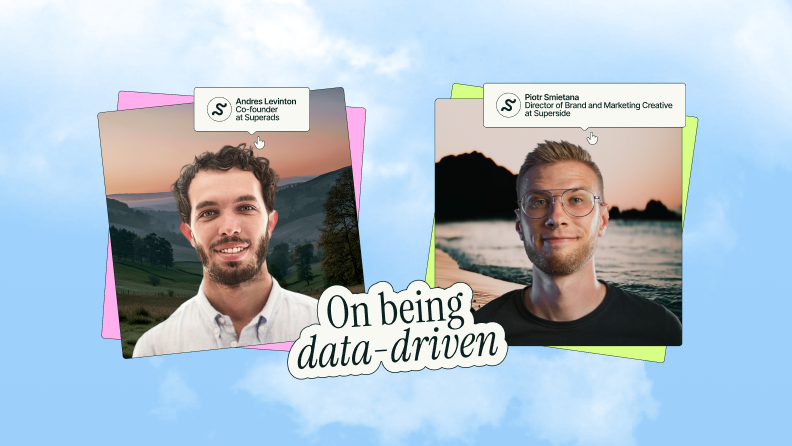
More than a feeling: Inside a marketing-creative duo's data-driven mindset
Great campaigns don’t just look good—they perform. But getting creative to yield real business results requires more than just good instincts or a clever tagline.In today’s landscape, where every impression counts and attention is scarce, you need strategy. You need insight. And most importantly, you need alignment between the creative and the data.In other words, being data-driven is essential. For Andres Levinton, Co-founder at Superads, and Piotr Smietana, Director of Brand and Marketing Creative at Superside, this doesn’t mean choosing data over creativity—it means using both, intentionally. Levinton and Smietana dug into what that looks like in our latest guide, Inside Great Creative Partnerships, including: Why dashboards aren't everything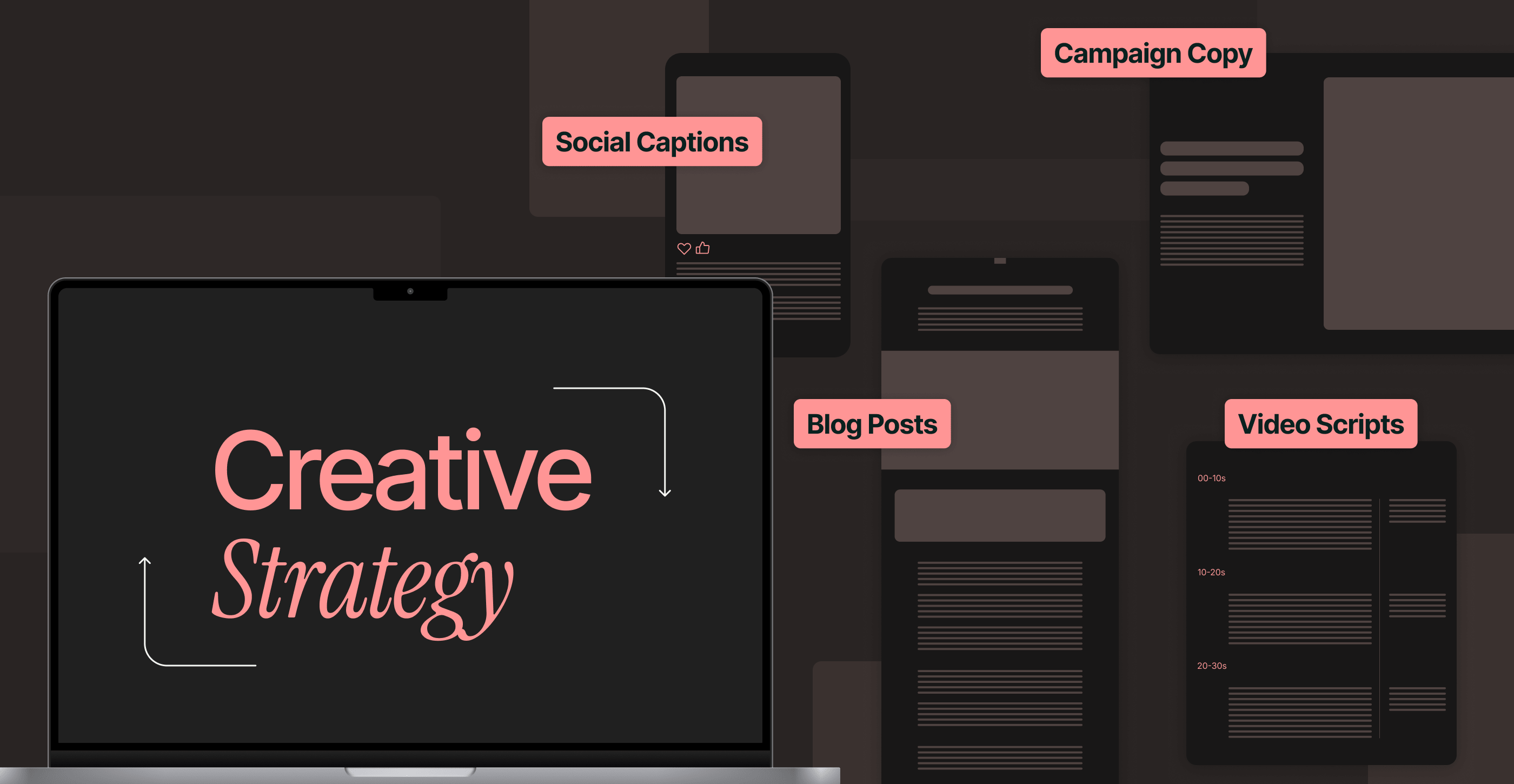
10 creative content agencies making brands shine in 2025
Enterprise content is everywhere, yet much of it fades into the background and fails to deliver results.A key challenge is that many brands still rely on predictable content formats and safe messages that don’t capture or sustain customer interest. With AI in the mix, the barrier to content production has dropped significantly. But this often results in output that feels bland, repetitive and, frankly, a bit robotic.At a time when millions of brands vie for your target customers’ attention, success hinges not just on a strong product or clever brand positioning but on content that’s creative, emotive and visually distinct.This is where top creative content agencies bring real value. They help enterprises leave an impression with fresh, innovative ideas, flawless execution and a consistent brand voice that builds trust and recognition.In this article, we dive into what these agencies do and why they’re vital for modern, performance-driven content marketing. We also showcase 10 trusted creative content agencies that can help your brand get the attention it deserves.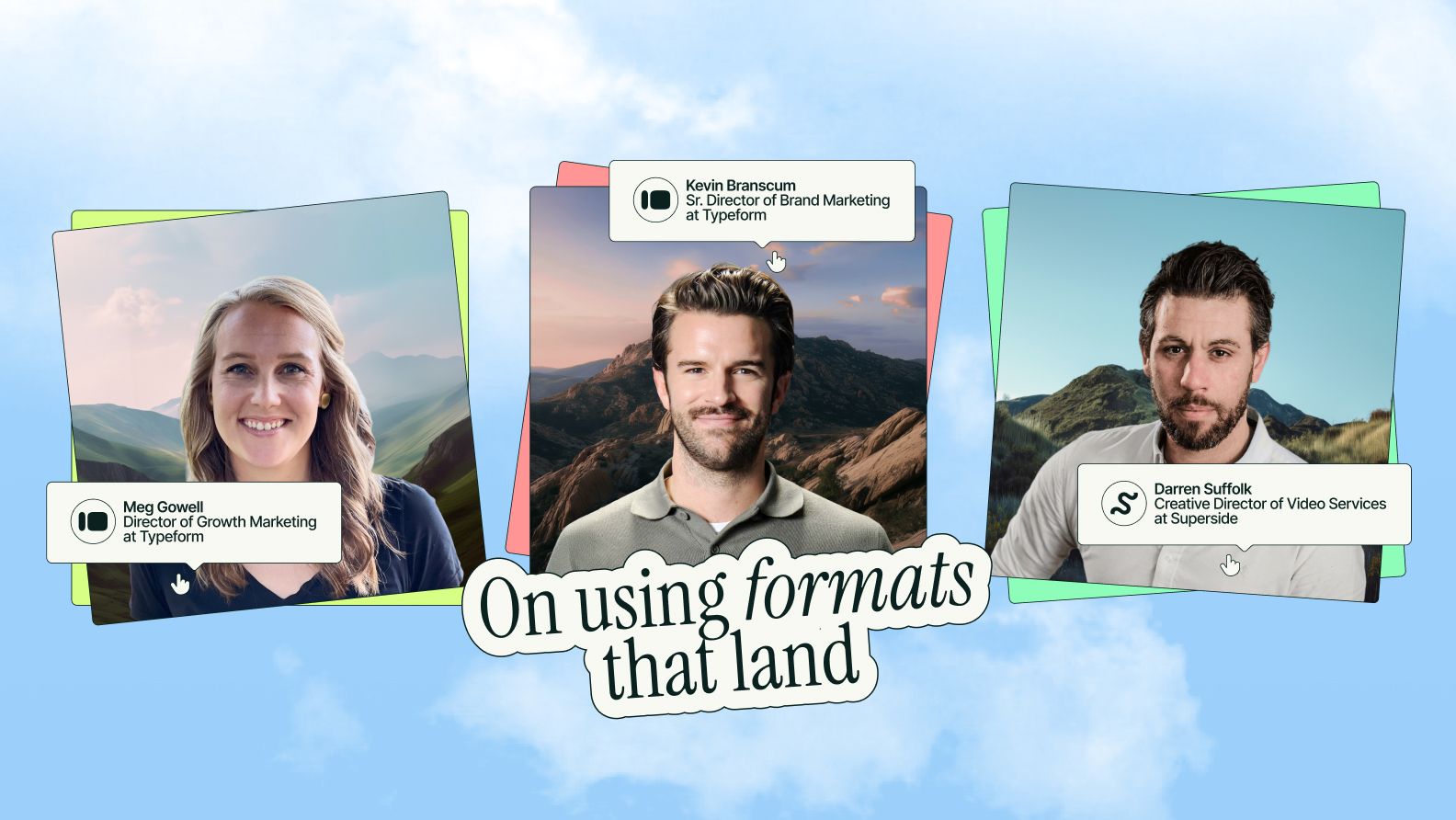
Formats that land: Inside a growth and brand team's recipe for results
There’s no singular formula for breakthrough creative.But if there’s a throughline, it’s this: The formats you choose matter as much as the message you’re trying to send. In an era where attention is currency, getting the right mix of video, visuals and content isn’t just a nice-to-have—it’s a growth imperative.To unpack what that mix looks like, we talked to Meg Gowell and Kevin Branscum, from Typeform’s growth and brand teams, and Darren Suffolk, from Superside’s video team for our latest guide: Inside Great Creative Partnerships. Bringing together both the creative and marketing perspectives, they shared: What success looks like across teamsWhy video (still) wins







